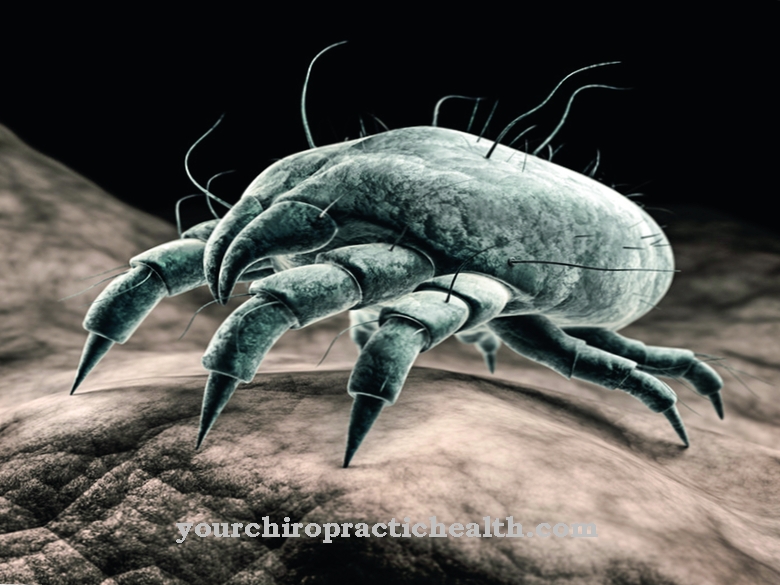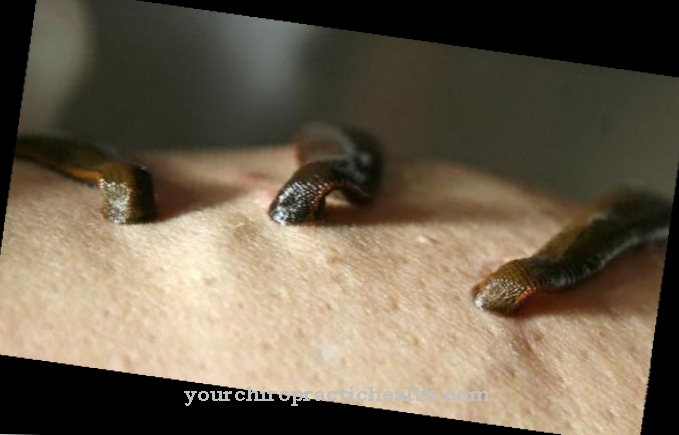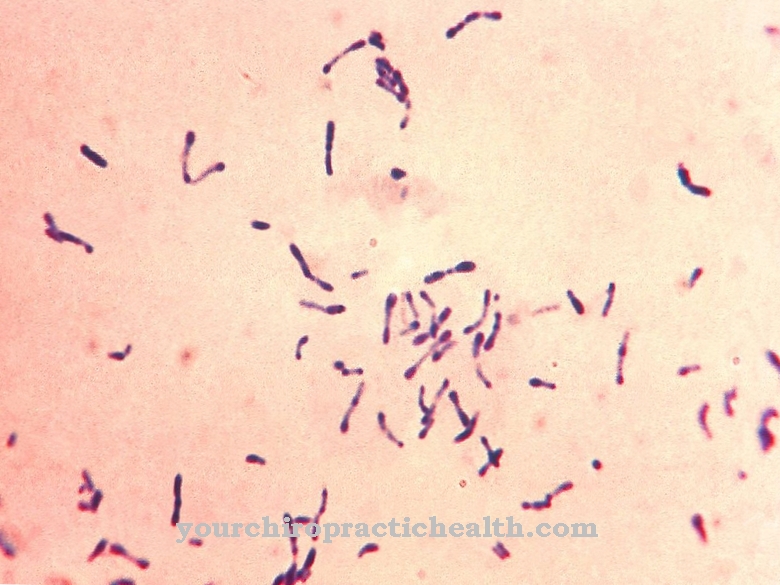As Geotrichum candidum In microbiology, milk mushrooms are called, which colonize the acidic environment of many dairy products. The fungi occur naturally in the human intestine, the oral mucosa and the lungs and are not associated with symptoms or benefits for healthy people. Immunodeficient patients can develop geotrichosis due to the fungi.
What is Geotrichum candidum?
Microorganisms of the genus Geotrichum candidum are yeast-like fungi that feed on rotten substances. The way they are fed makes the fungi saprophytic organisms that occur mainly in an acidic environment.
Hyphae characterize the fungus. These are thread-like cells. With hyphae fungi, the entire fungus is composed of a hyphae. The individual hyphae are divided into different sections by partition walls. The partition walls run through the Geotrichum candidum transversely and are also known as septa. In the fungus genus Geotrichum candidum, the hyphae disintegrate into rectangular arthrospores. The individual segments of the mushrooms thus become spores. The fungi do not form sprout cells. Arthrospores are conidia and thus typical organs of distribution for the reproduction of higher fungi.
Due to their preferred living environment, mushrooms of the genus Geotrichum candidum are also known as milk mushrooms. They belong to the group of molds and thus to a systematically heterogeneous group of filamentous fungi. Meanwhile, medicine assumes a possible differentiation into pathogenic and non-pathogenic strains.
Occurrence, Distribution & Properties
Fungi of the genus Geotrichum candidum live mainly in the acidic environment of food and are therefore saprophytic in the human environment. Possible areas of life for the mushroom genus are vegetable plants such as tomatoes, fruits, milk and dairy products, such as Harz cheese, Camenbert and other types of cheese. In the production of fine cheese, the mushrooms play a key role in creating the aromas. The fungi are also found in the soil and in sewage.
Various strains of the genus also live in the human body, where they are known as Humen parasites and have discovered niches for themselves. In addition to the apathogenic saprophytic colonization of the intestine, sub-genera of the fungal species can also pathogenically colonize the intestine and the lungs.
In addition, mold species of the genus Geotrichum candidum are known to some extent as a reportable plant disease. In this context, among other things, they produce fungal toxins in spoiled food. Their use as a food processor is just as widespread.
In addition, the mushrooms are used as a biological source for the manufacture of antibiotics and the production of cholesterol-lowering drugs.
Under the name "Geotrichum candidum" the fungus genus is almost unknown. Most people are familiar with the mold as milk mold on curd milk or quark. The fungi manifest themselves on milk and dairy products in the form of fine fluff with a whitish yellow color. Their culture behavior is characterized by yeast-like growth that initially takes place without aerial mycelium. Because of this, the cultures are easy to confuse with yeasts. At room temperature, threads appear in the agar and aerial hyphae are formed. The disintegration of aerial hyphae into arthrospores is also very similar to that of yeast cells. The arthroconidia are hyaline and smooth. They are unicellular and come in rectangular or cylindrical shapes with different sizes.
Fungi of the genus Geotrichum candidum do not form true blastoconidia (cells from sprouting). The mushroom genus is characterized as a fast-growing genus that forms dull and flat colonies when wet. The surface of the colonies can appear whitish, light gray or yellowish. A felty surface texture shows up on the colonies. A cotton-like eruption lies in the center and a corona forms on the periphery. Younger cultures typically smell fruity. Older cultures, on the other hand, are cheesy.
The genus Geotrichum candidum is widespread worldwide and is pathogenic only in the rarest of cases. In the digestive tract and in the oral cavity, the occurrence usually has neither disease value nor benefit for humans.
Illnesses & ailments
As a rule, the genus Geotrichum candidum does not cause any problems to healthy people and leads a rather inconspicuous existence in contact with them. However, the genus can cause geotrichosis in people with diseases of the gastrointestinal tract or people with a reduced immune system. It is an infection with lung involvement classified as opportunistic. Clinically the infection shows a variable form. With broncho-pulmonary infestation, caverns with diffuse peribronchitic or tumorous infiltrates or abscesses form.
In addition, skin symptoms can manifest themselves. Above all, this includes interdigital mycosis (athlete's foot). Inflammatory granulomas of the extremities, face or scalp can also occur. An involvement of the oral mucosa, which causes the appearance of stomatitis, is rather rare. The most relevant complication of the infestation in immunodeficient patients is sepsis, i.e. systemic blood poisoning.
The diagnosis of geotrichosis is made by microscopic cultural evidence of fungus from the bronchial secretion and the mucous membranes. If the skin is affected, swabs of the skin show the colonization. The final confirmation of the diagnosis is made by histological detection of the pathogen.
Patients usually receive imidazole antifungal agents such as ketoconazole for treatment. Application in the form of ointments is carried out locally. If organs are affected, internal therapy must take place, which in most cases corresponds to systemic treatment and is similar to the treatment of candida sepsis. The course is to be classified as rather unfavorable after sepsis has occurred.




.jpg)























